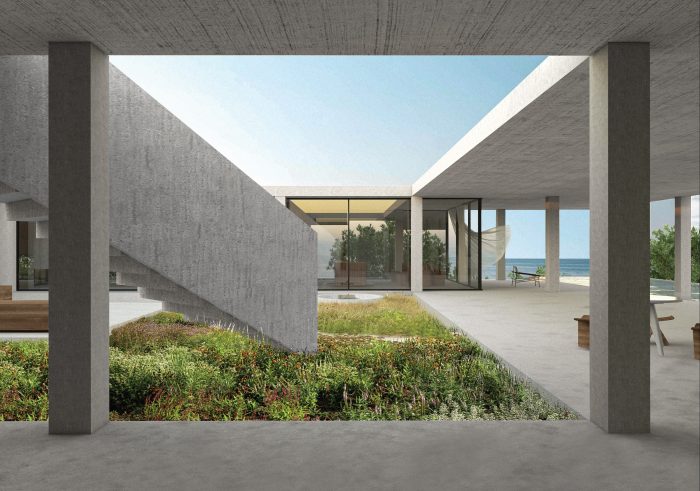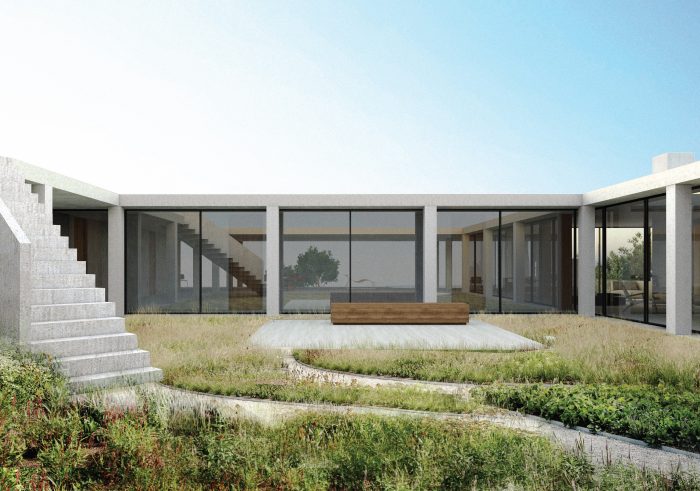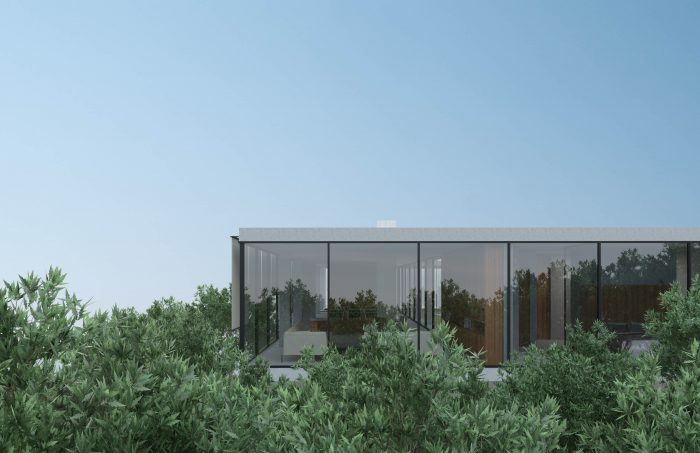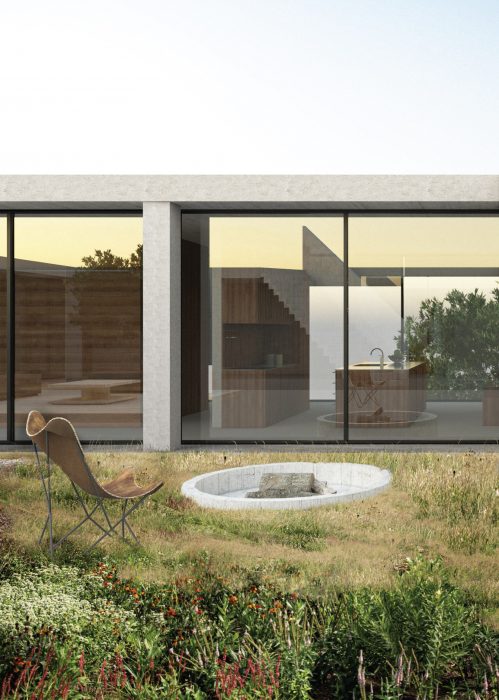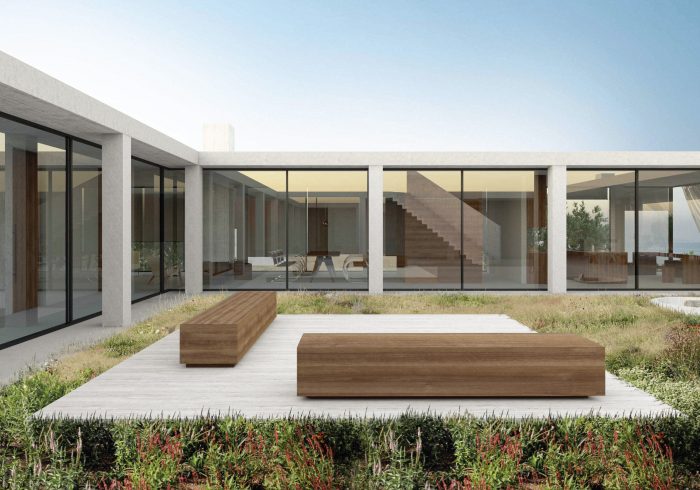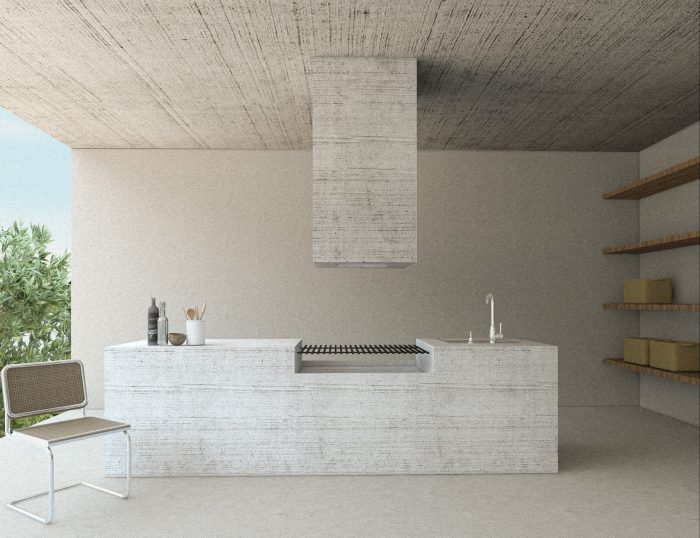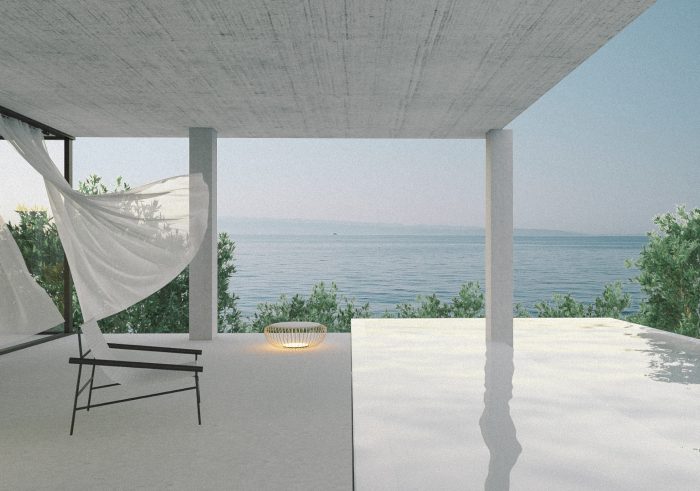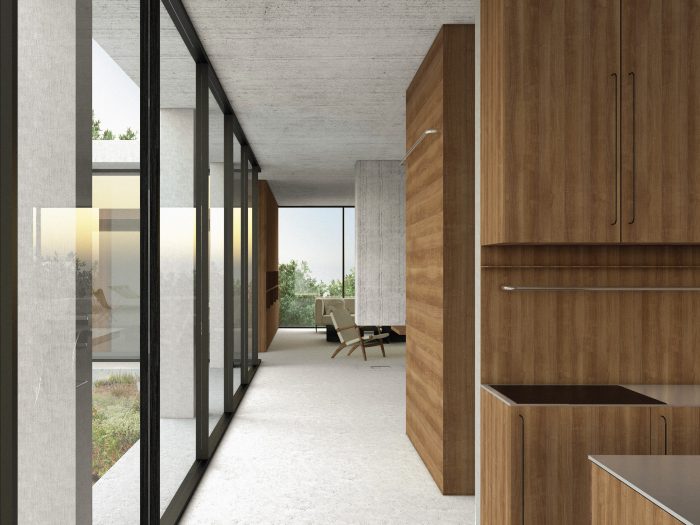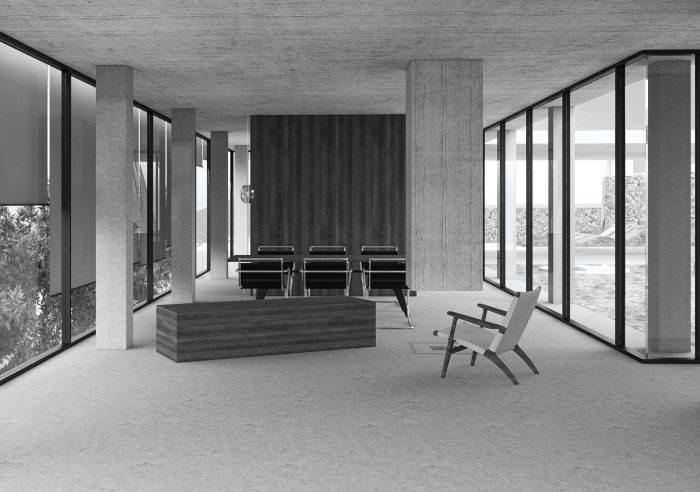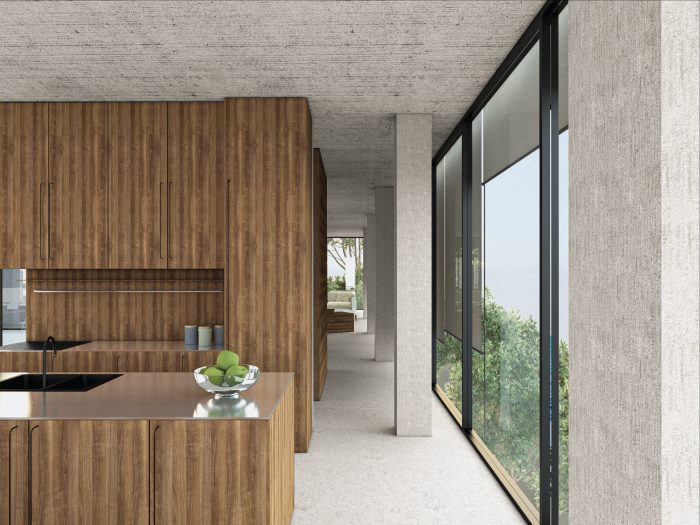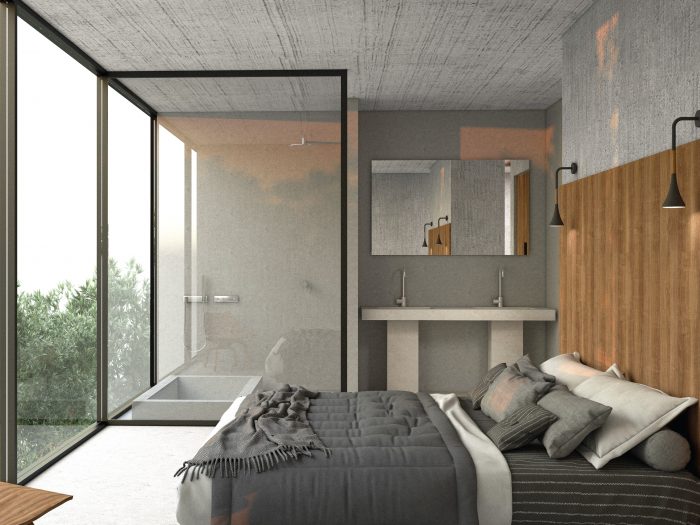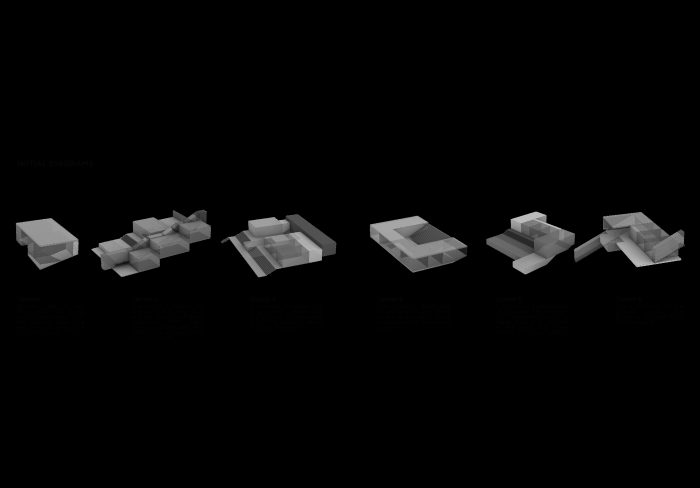Të dhëna mbi projektin
-
Studio
Boiken Developments
-
Faqja e Studio
-
Tipologjia
Residential Architecture
-
Statusi
Project Idea
-
Kate
1
Përshkrimi
HOUSE OF THE LABYRINTH SONG
- A tribute to a structured approach to problem-solving that encourages creativity, collaboration, and innovation while keeping the needs and perspectives of end-users at the forefront of the design process.
- The myth of Ariadne is a significant story in Greek mythology that has been interpreted and reinterpreted over time. Ariadne was a princess of Crete who helped the hero Theseus defeat the Minotaur, a monster that lived in the labyrinth, by giving him a ball of thread to help him find his way out. Ariadne's thread can be interpreted as a metaphor for guidance and finding one's way. The labyrinth itself represents the complexity and confusion of life, and the story of Theseus and Ariadne serves as a reminder that even in the darkest and most confusing of situations, there is a path to the truth and a way out.
- The Roman architect Vitruvius, in his treatise "De Architectura," outlined the principles of classical architecture, including the use of rhythm, proportion, and pattern. According to Vitruvius, these elements are essential to the creation of a harmonious and well-designed building.
- Proportion refers to the relationship between the various parts of a building and their relationship to the whole. Vitruvius believed that buildings should be proportionate in their design, with each element of the building having a specific and defined role.
- Rhythm is created by the repetition of similar elements, such as columns, windows, or other architectural features. Vitruvius believed that this repetition created a sense of movement and flow within the building, making it more aesthetically pleasing to the eye.
- Pattern refers to the use of repeated motifs, such as decorative elements, in the design of a building. Vitruvius believed that these patterns added to the beauty and harmony of a building, creating a sense of unity and coherence.
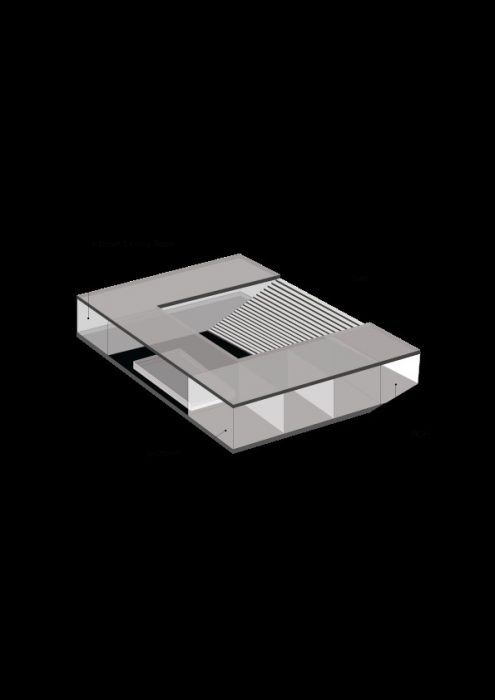
AXONOMETRIC VIEW
- We wished to create a building that would be known for its minimalist and modernist design, characterized by clean lines, simple shapes, and a limited color palette. The villa is situated on a steep slope, with a series of terraces that offer stunning views of the sea and the surrounding landscape. The interior of the villa is designed to be open and airy, with large windows and doors that allow for plenty of natural light and a connection to the outdoors.
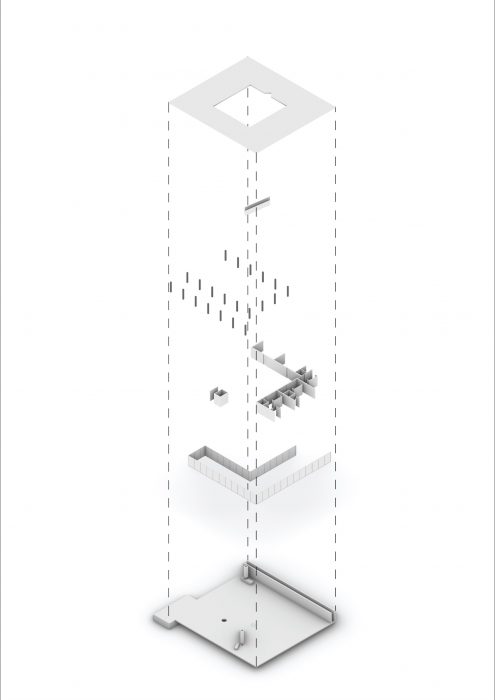
AXONOMETRIC EXPLOSION
- Through the "Elements" lenses, which explore the fundamental components of architecture, such as walls, floors, and ceilings, we attempted to understand how they can be used to create innovative and effective architectural designs. The aim was to challenge traditional notions of architecture and present new ways of thinking about space and form. Therefore, highlighting the importance of design processes and how they can be used to create architecture that is not only functional but also aesthetically pleasing and socially relevant.
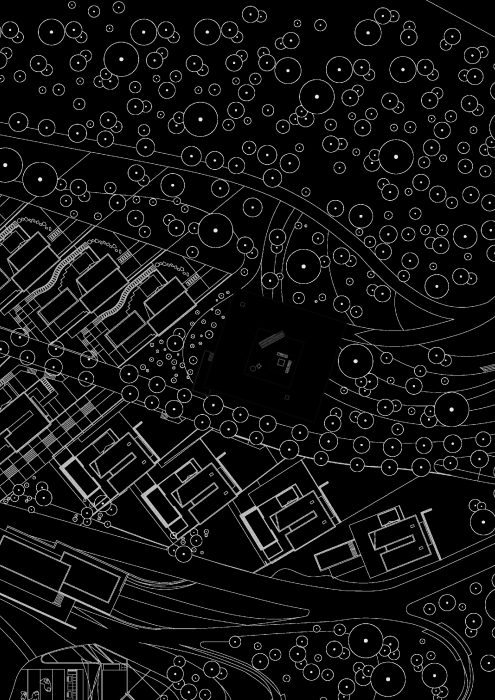
Positioned near an ancient Roman city ruin not far from Greece
- Mysterious and hidden: The entrance was designed to blend in with its surroundings and be hidden from view, creating a sense of mystery and intrigue, and making the discovery of the entrance feel like a special accomplishment.
- Playful and whimsical: The entrance was designed to be playful and whimsical, with bright colors or interesting shapes, to create a fun and lighthearted atmosphere.
- Minimalist and modern: The entrance was designed to be simple and modern, with clean lines and a minimalist aesthetic, to create a sense of sophistication and contemporary style.
- "Architectural sensations in labyrinth spaces" refers to the experience of walking through complex, maze-like structures and the physical and psychological effects it has on the individual. This can include feelings of disorientation, curiosity, excitement, and a heightened sense of awareness of one's surroundings. The design of labyrinth spaces can be used to create specific sensory experiences, such as changes in lighting, sound, and temperature, that contribute to the overall sensation of being in a labyrinth.
- A seamless integration of architectural elements such as windows has been at the center of design challenges.
- Grounded volumes that blur the lines between in and outdoor
- Reaching the inner garden of a maze can evoke a variety of feelings depending on the design valuation and the individual's experience.
- RELIEF | After navigating through the entrance and some twists and turns of the maze, reaching the inner garden can bring a sense of relief and accomplishment. It can feel like a reward for one's efforts and perseverance.
- Serenity | The inner garden of a maze can be a peaceful and tranquil oasis, away from the chaos and noise of the outside world. It can create a sense of calm and serenity, allowing visitors to relax and recharge.
- Awe | The design of the inner garden was intended to be impressive and awe-inspiring, leaving visitors in a state of wonder and amazement.
- Curiosity | The inner garden could hide areas or surprises, sparking curiosity and encouraging visitors to explore further. It can be an invitation to continue the adventure and discovery.
- The interior is characterized by its minimalist and contemporary design, which features a neutral color palette and natural materials.
- Simplicity | The interior design is intentionally minimal and understated, with a focus on clean lines and simple forms. The result is a sense of serenity and calmness that permeates throughout the house.
- Natural materials | The use of natural materials, such as wood and concrete, creates a warm and tactile feel throughout the interior. The materials are left in their raw and natural state, providing a sense of authenticity and timelessness.

- Open and light-filled | Large floor-to-ceiling windows and sliding doors provide plenty of natural light and blur the lines between indoor and outdoor spaces.
Vendndodhja
Saranda, Vlorë, Albania


